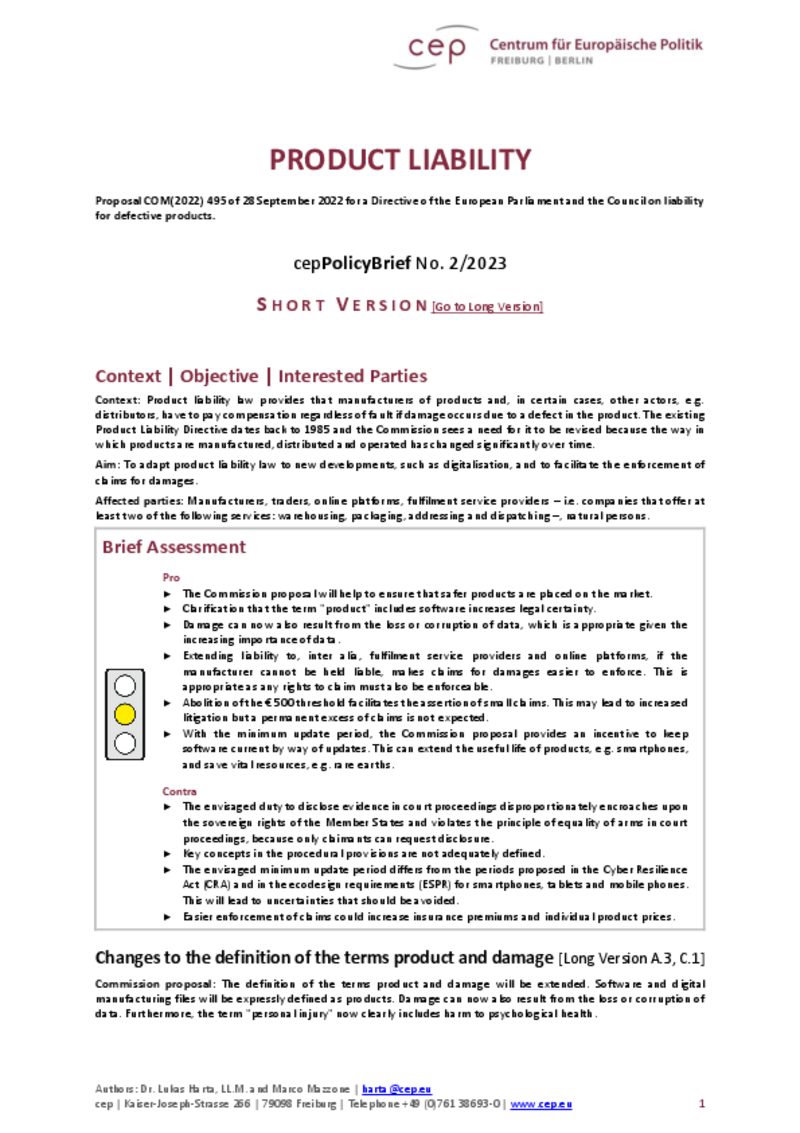
Consumer & Health
Product Liability (cepPolicyBrief COM(2022) 495)
cepPolicyBrief
"Especially with regard to software, the Commission proposal strengthens legal certainty," says cep economist Marco Mazzone, who analysed the draft with cep lawyer Lukas Harta. According to Mazzone, it is appropriate that damages caused by updates are subject to liability. The cep expert also welcomes the fact that the threshold of 500 euros is to be dropped. However, according to Harta, core terms are not defined with sufficient precision in the prerequisites for the disclosure obligation and the reversal of the burden of proof. "Defendants can be obliged to disclose evidence in court. Something like this already exists, but in the proposed form it does not leave the Member States enough freedom to find an implementation that fits their legal system best," criticises Harta.
Harta criticises that companies should provide updates for software products for up to ten years. In the Cyber Resilience Act only five years are demanded. "We plead for uniform regulations. Anything else leads to confusion," emphasises the cep expert. Updates fall under product liability for the first time. Accordingly, in future, a manufacturer's liability can also arise if a product needs to be maintained or checked after it has left the factory. European product liability will also cover artificial intelligence (AI) systems. New requirements for cyber security will also be included.
This week, the committees of the European Parliament will discuss the draft of the new product liability directive.



